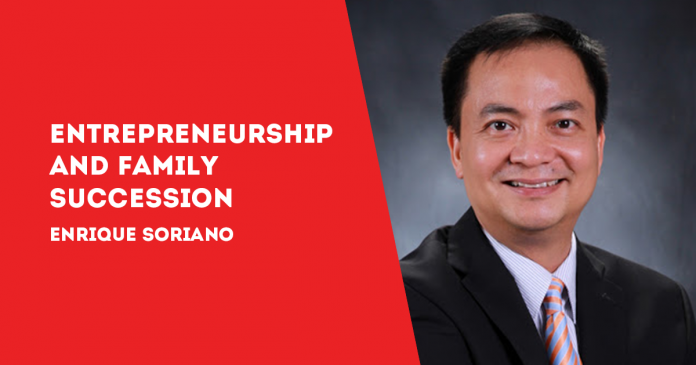
BY PROF. ENRIQUE SORIANO
THE SUCCESSION of leadership in family businesses is a pivotal issue that can determine an enterprise’s long-term success or failure.
While Japan’s Mukoyoshi model emphasizes flexibility by adopting a son-in-law to ensure capable leadership, China’s traditional succession model remains deeply rooted in passing the torch to the eldest son or keeping it strictly within the family.
This contrast between the two cultures offers valuable insights into how different approaches to succession can impact the sustainability and growth of family businesses.
The Sacred Role of the Eldest Son
In Chinese culture, the eldest son holds a revered position within the family hierarchy, deeply embedded in Confucian values.
The eldest son is not only seen as the natural successor to the family business but also as the guardian of the family’s honor, traditions, and ancestral legacy. Leading the family business is often viewed as a sacred duty, passed down through generations to preserve the family’s wealth, status, and influence.
The concept of zhangzi, or the eldest son, being the rightful heir is a longstanding tradition in Chinese families.
In patriarchal cultures, firstborn sons are given special authority and honor, along with the responsibility of managing the family’s inheritance. This principle has historically dictated that leadership of the family business should remain within the direct bloodline, with the eldest son typically groomed from a young age to take over. The Chinese model emphasizes continuity and the preservation of the family’s core values, which are seen as integral to the business’s identity and success.
The Rigidity of Tradition: Challenges and Opportunities
While the Chinese model’s focus on keeping leadership within the family fosters a strong sense of identity and continuity, it also presents challenges. Rigid adherence to this tradition can lead to issues when the eldest son or designated family member lacks the interest, skills, or temperament to lead the business effectively. This can result in leadership gaps, internal family conflicts, or even the decline of the business.
In contrast, Japan’s Mukoyoshi model offers a more flexible approach by allowing families to adopt a son-in-law well-suited to take over the business, regardless of biological connection. This flexibility enables Japanese family businesses to maintain strong leadership and adapt to changing market conditions, contributing to their long-term success.
A Comparative Perspective: Tradition vs. Adaptability
As I continue to explore the nuances of family business succession across different cultures through ongoing collaborations with family business experts in Asia and Europe, the stark differences between the Chinese and Japanese models become increasingly apparent.
The Chinese model’s strength lies in its emphasis on family loyalty, continuity, and the preservation of traditions. However, its rigidity can be a double-edged sword, particularly in an era where businesses must be nimble and innovative to thrive.
The Japanese Mukoyoshi model, on the other hand, showcases the advantages of adaptability and merit-based succession. By prioritizing the selection of the most capable individual, even if they are not a blood relative, Japanese family businesses can ensure that their leadership remains strong and effective across generations. This raises an important question for family businesses worldwide: Is it better to adhere strictly to tradition or adopt a more flexible approach to ensure the long-term success of the business?
Could Mukoyoshi Work in China and Beyond?
This leads to the next critical discussion: Could the Mukoyoshi model, with its emphasis on flexibility and merit, work in China and other parts of Asia?
Exploring this question will uncover the potential for a hybrid approach that balances tradition with adaptability, offering new possibilities for family business succession across cultures./PN







